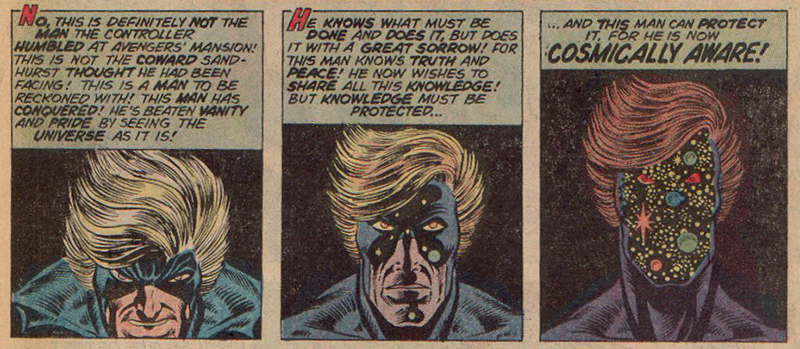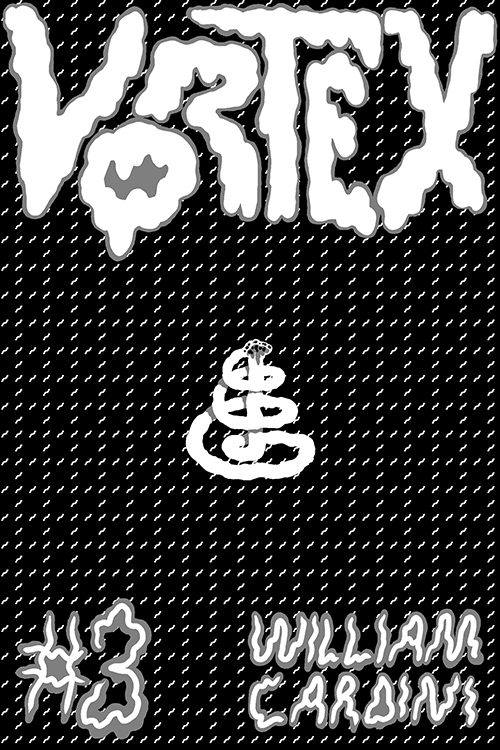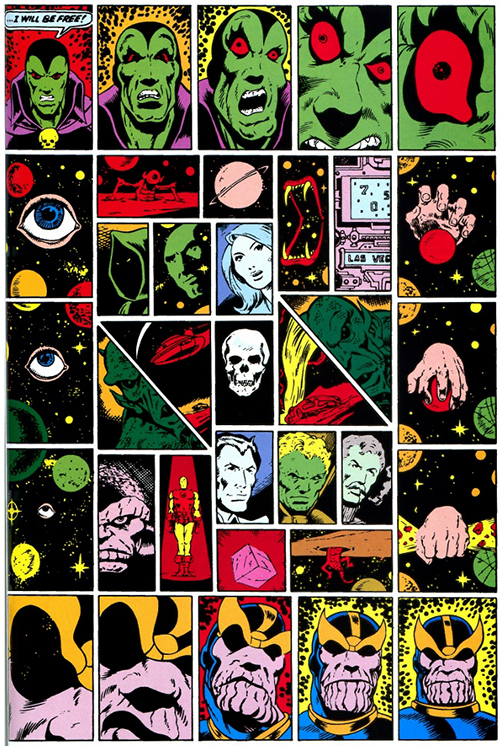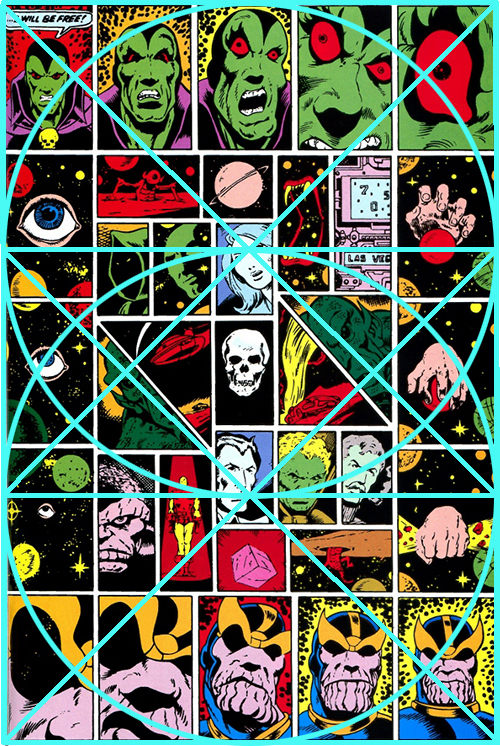This past weekend I was flipping through some issues of Epic Illustrated that I bought a while ago on a trip but never got to reading. Epic Illustrated was an attempt by Marvel to cash in on the popularity of Heavy Metal. It was an opportunity for mainstream creators like John Buscema, Neal Adams, and Jim Starlin to draw fantasy and sf stories outside the restrictions of the comics code.
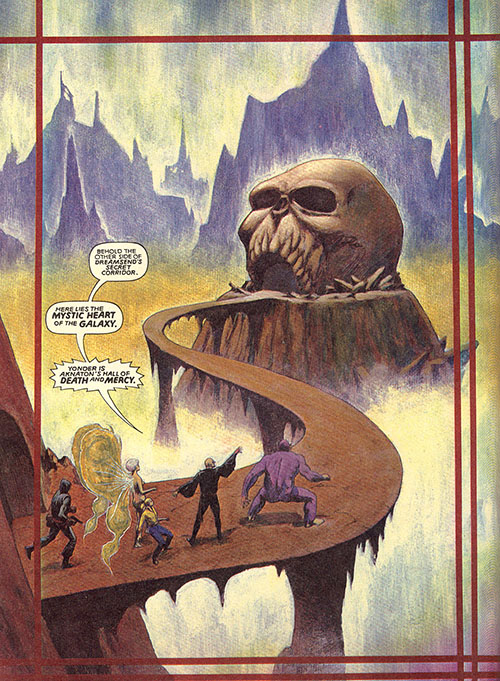
A page from the chapter of Jim Starlin’s “Metamorphic Odyssey” in the October 1981 issue of Epic Illustrated. This page has all of the protagonists: a warrior, a nude fairy woman with butterfly wings, an Earth woman, the wizard Aknaton, and the alien cannibal Za. From this blog post.
The first nine issues of Epic Illustrated serialized an epic sf comic by Jim Starlin called “Metamorphosis Odyssey.” I’ve only read two issues but, from what I’ve seen, the story draws on Egyptian mythology to describe a battle for the fate of the galaxy. There’s a quest for a powerful artifact called the Infinity Horn, which seems familiar to me after reading Starlin’s Thanos-centric miniseries, but Starlin uses the freedom of Epic Illustrated to tell a story that has greater consequences than any cosmic battle in a Marvel comic.
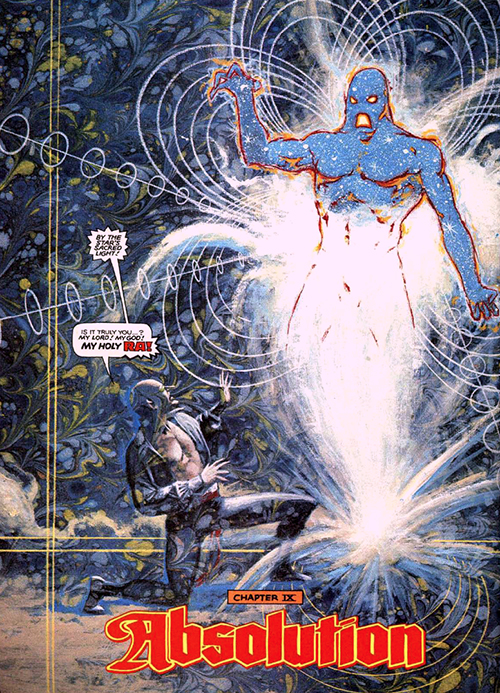
The splash page for Chapter IX of “Metamorphic Odyssey” in the June 1981 issue of Epic Illustrated. The humanoid on the left, Aknaton, is talking to the god Ra. Aknaton is from the planet Orsirus. These are the Egyptian elements of the story. I like how this page and the previous one I selected incorporate geometric elements. From this blog post.
Starlin continues the story of “Metamorphosis Odyssey” in other graphic novels and his creator-owned series Dreadstar. Despite being a big fan of Starlin’s work in Warlock and Silver Surfer, I haven’t read Dreadstar, but “Metamorphosis Odyssey” makes me want to buy the recently released Dreadstar Omnibus.
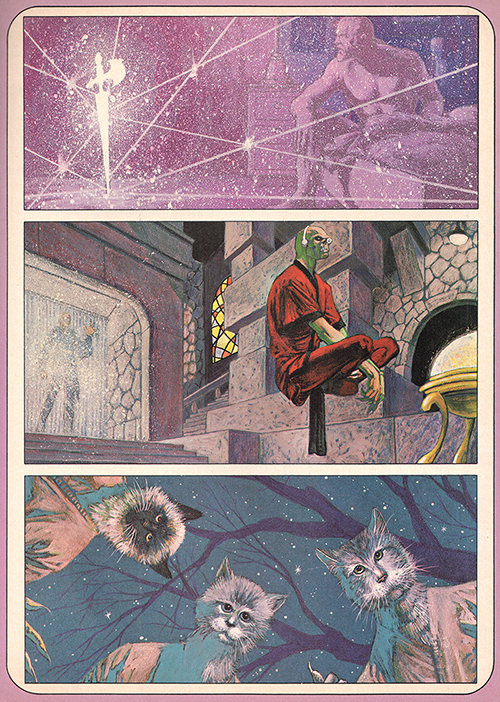
I scanned this page of paintings from a Jim Starlin interview in the December 1981 issue of Epic Illustrated. I think they’re supposed to illustrate scenes from the sequels.
What’s interesting about “Metamorphosis Odyssey” is that Starlin paints, rather than draws, the comic. In the first issue the paintings are grayscale but they switch to full color in the second. There’s an interview with Jim Starlin in the December 1981 issue where Starlin talks about his process. He used “blue or reddish-orange” matte boards as the substrate (depending on “the overall tone” he wanted) and then painted in highlights, shadows, and containing lines. He got this technique from looking at Frazetta. This is the only full-color story that I’ve seen Starlin do this way. He says that “the texture of the board kind of threw [him] off in the printing.” I wonder if the paintings could be reproduced more accurately with contemporary printing techniques.
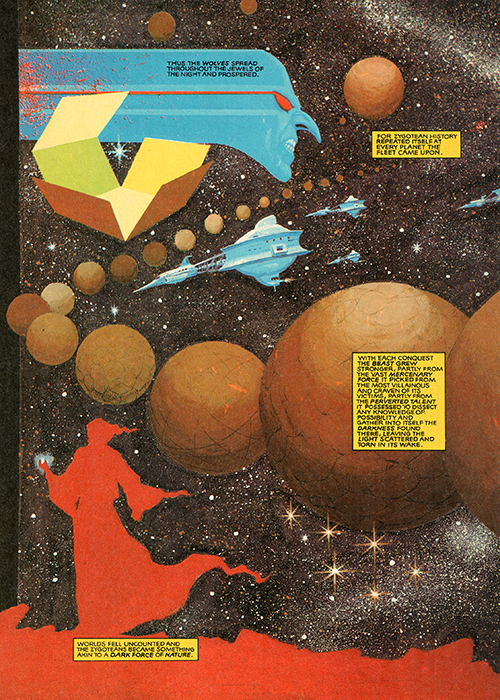
I scanned this page from Chapter X of “Metamorphosis Odyssey” in the August 1981 issue of Epic Illustrated. I love how this page is designed, it’s got movement and bold colors. There’s a pretty extensive article on “Metamorphosis Odyssey” and its sequels on Wikipedia if you want to know more.
I also learned some biographical facts about Starlin from the interview. He served in Vietnam War, which was a primary inspiration for “Metamorphosis Odyssey,” but was kicked out for his attitude. One thing that Starlin did to get discharged was to draw and distribute an anti-war comic called The Eagle. I’d like to see that!

